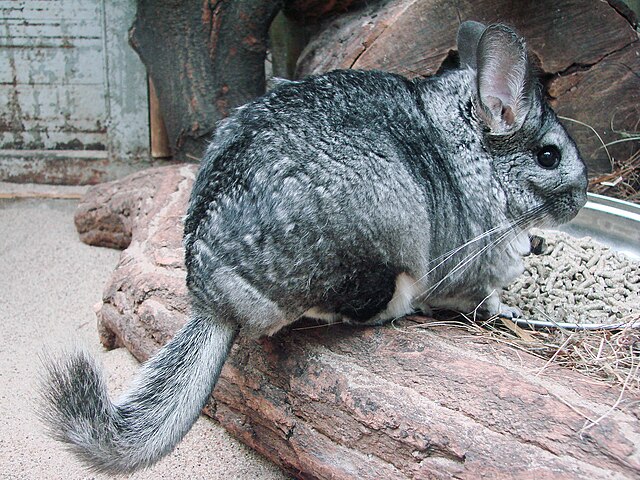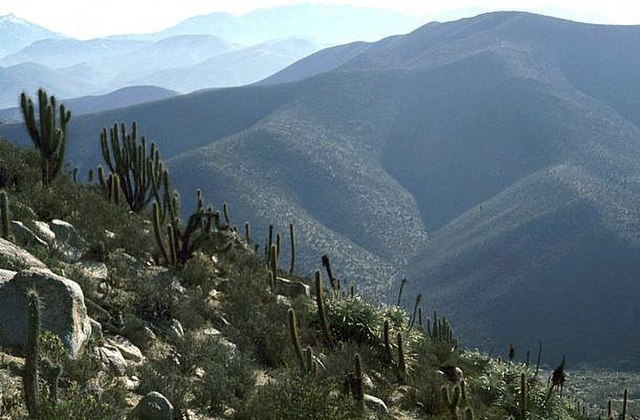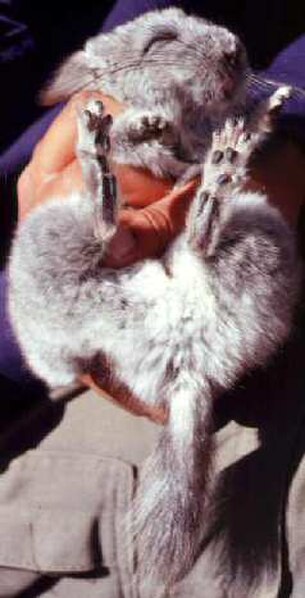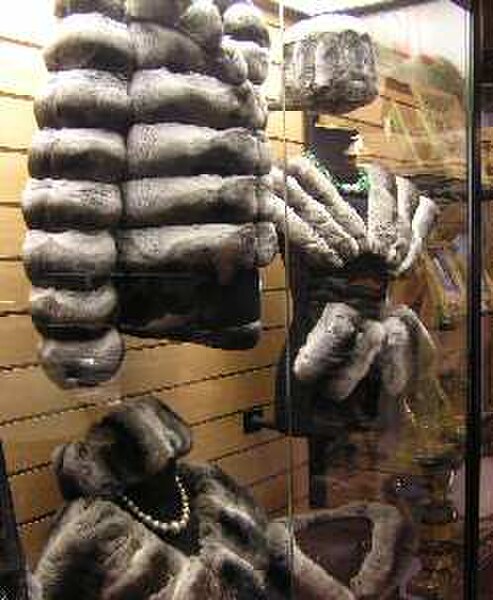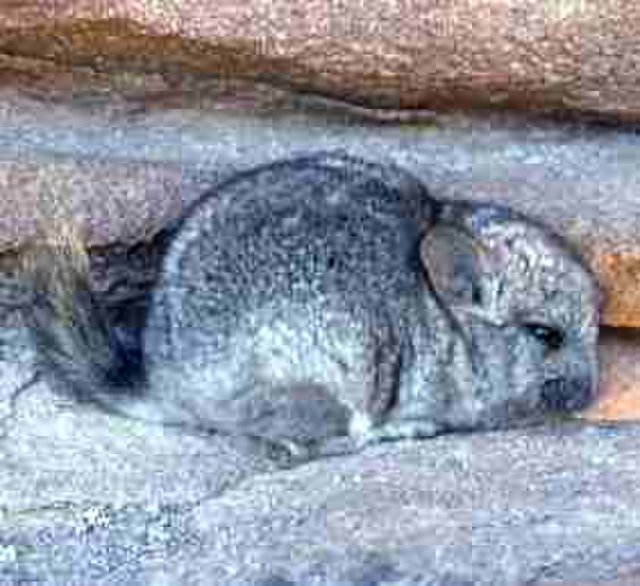Chinchillas are either of two species of crepuscular rodents of the parvorder Caviomorpha, and are native to the Andes mountains in South America. They live in colonies called "herds" at high elevations up to 4,270 m (14,000 ft). Historically, chinchillas lived in an area that included parts of Bolivia, Peru and Chile, but today, colonies in the wild are known only in Chile. Along with their relatives, viscachas, they make up the family Chinchillidae. They are also related to the chinchilla rat.
Chinchilla
Chinchilla habitat in the Andes mountains of Chile
A short-tailed chinchilla, classified as "Endangered" by the IUCN, in Chile in 2007
Chinchilla fur coat and accessories
The short-tailed chinchilla is a small rodent part of the Chinchillidae family and is classified as an endangered species by the IUCN. Originating in South America, the chinchilla is part of the genus Chinchilla, which is separated into two species: the long-tailed chinchilla and the short-tailed chinchilla. Although the short-tailed chinchilla used to be found in Chile, Argentina, Peru, and Bolivia, the geographical distribution of the species has since shifted. Today, the species remains extant in the Andes mountains of northern Chile, but small populations have been found in southern Bolivia.
Short-tailed chinchilla
Chinchilla chinchilla in Chile (2007)
A comparison of long-tailed and short-tailed chinchillas.
Fur slips can cause bald spots.

